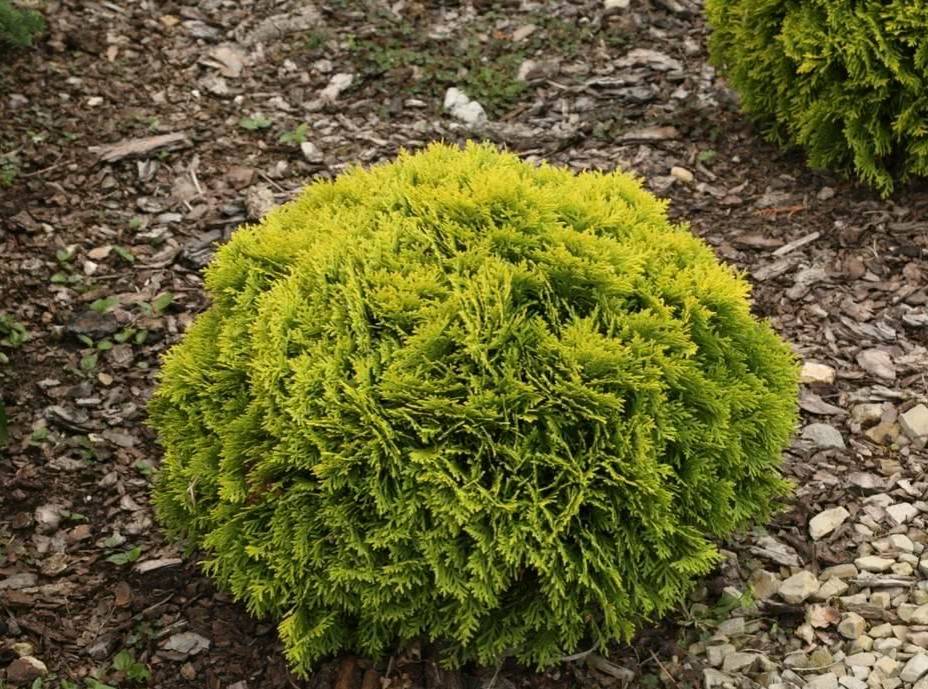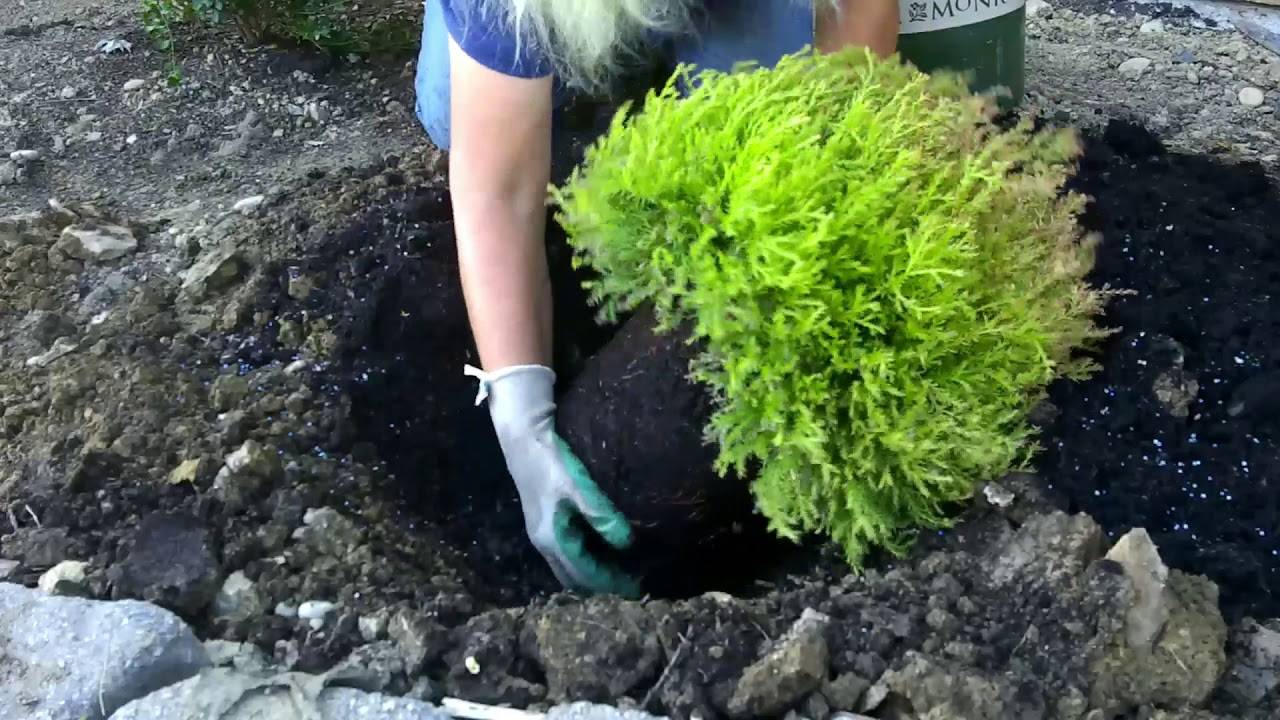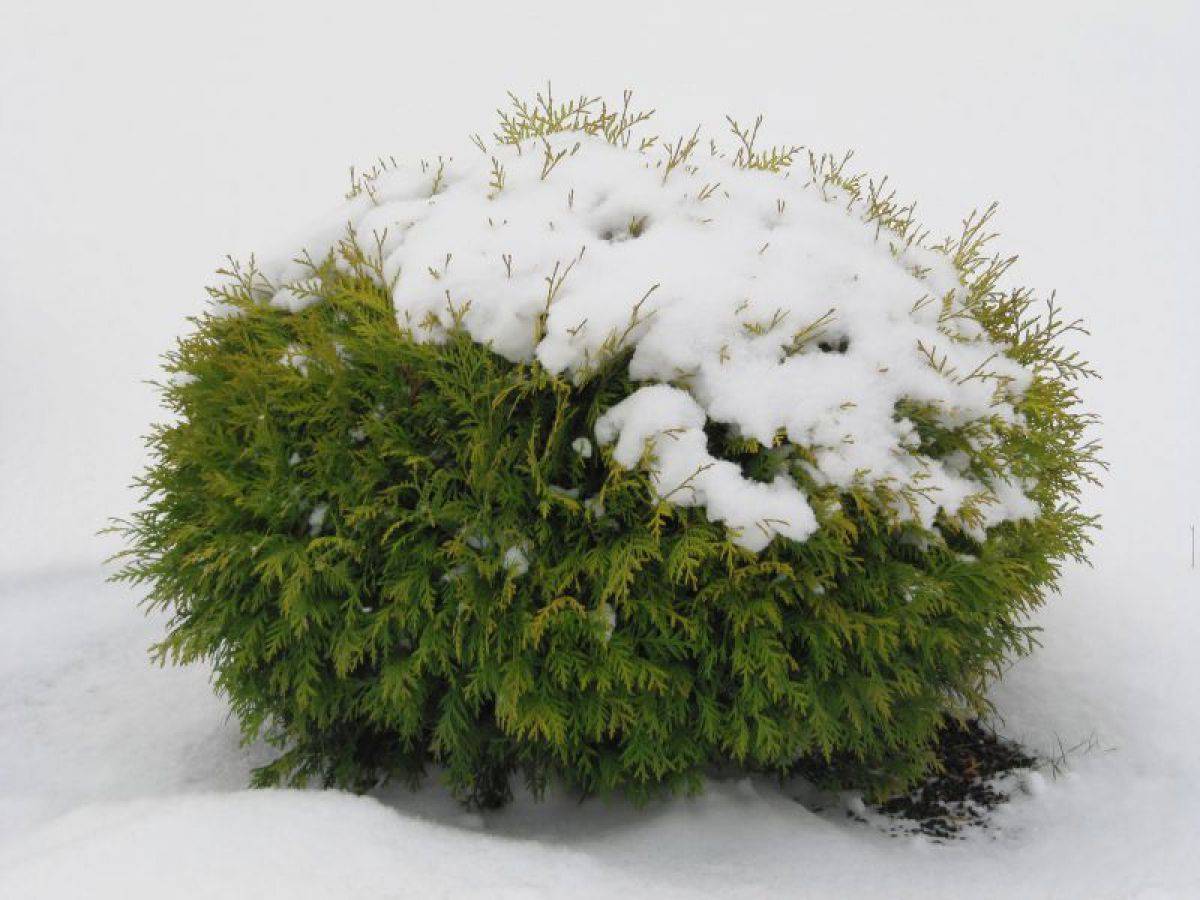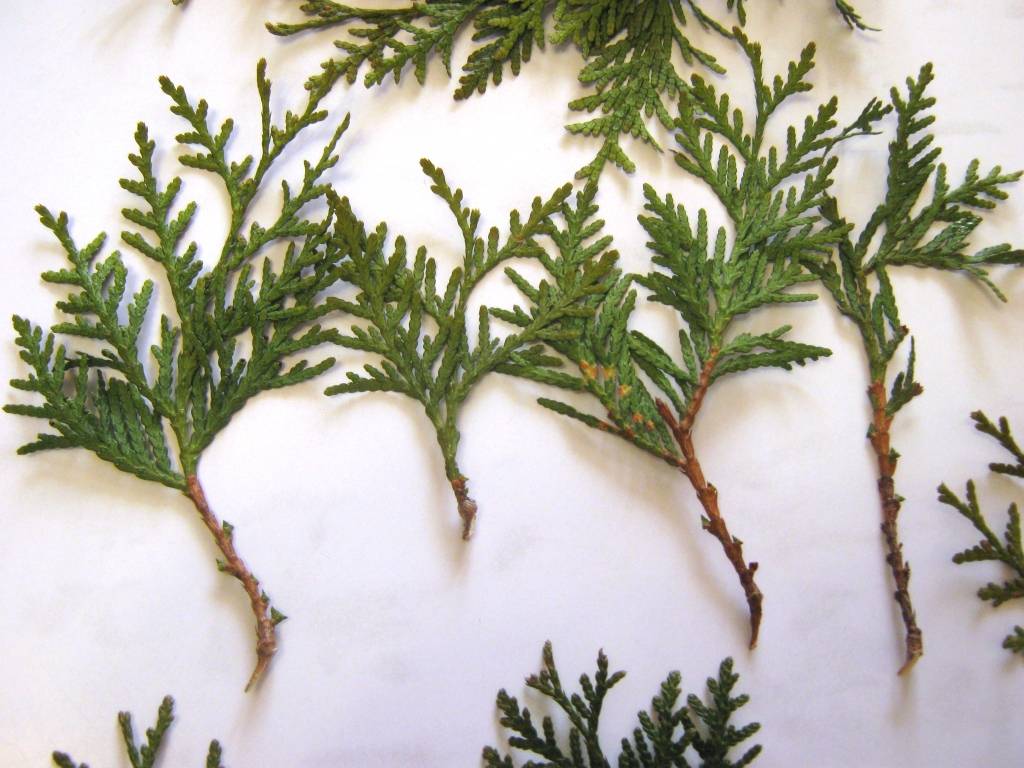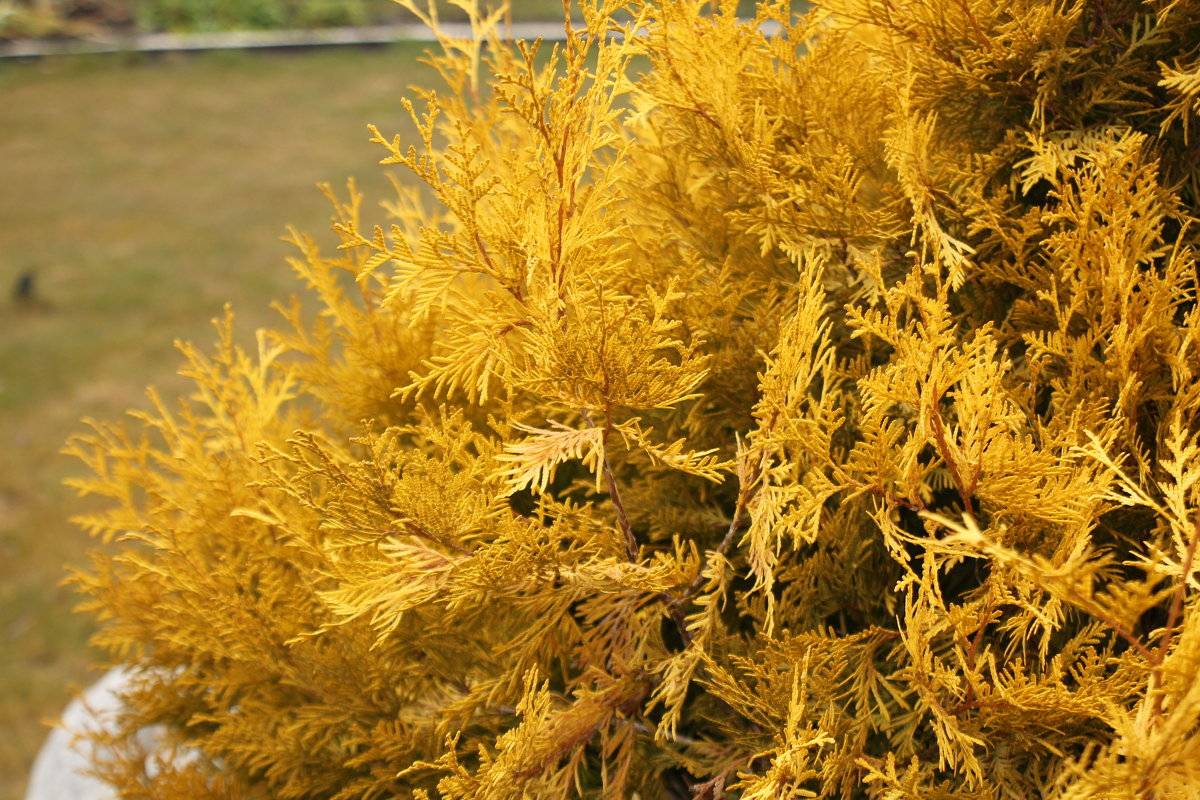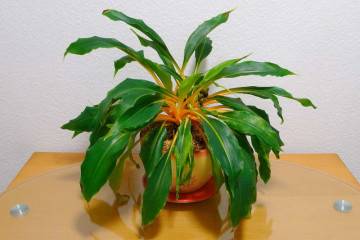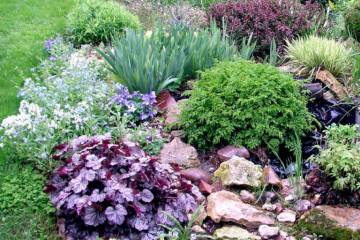Tuya Miriam (Mirjam) western - description
Content:
Among gardeners today, the western thuja Miriam is very popular. This culture is considered one of the most popular for landscaping personal plots and gardens. The plant attracts with the original color of the needles and an interesting shape of the crown. A variety of coniferous crops appeared as a result of a mutation of the Danika variety.
Tuya Miriam: description and dimensions
Thuja western Miriam is an evergreen plant, which is a small ball-shaped shrub. The variety is widely known in Europe. According to the description, the plant has dense and delicate needles. In summer, it acquires a golden-green color, and in winter it becomes greenish-orange with a bronze tint. In landscape design, this variety is very popular.
Tuya Miriam, as it is also called, appears as unpretentious and immune to abrupt climatic changes. The crown is compact, neat, spherical in diameter reaches 0.8 m. The needles are located vertically. It is soft and snug against each other.
How fast it grows
The variety is characterized as dwarf. In height and width, thuja grows up to 80 cm. It grows slowly. Over the year, the size can increase by 10 cm.
Planting and caring for thuja Miriam
The growth and development of thuja entirely depend on where it will be planted, and how it will be done.
How to plant
Mirjam works best in slightly acidic soil. When planting, it is best to give preference to sunny places, since in low light the plant loses its spherical shape and does not look so attractive.
It is possible to plant the shrub in an area with light shade, but it should be light.
Despite the fact that thuja western Miriam are unpretentious plants, they will grow and develop better if planted in fertilized soil, which is moderately moist, breathable and loose. It is strictly forbidden to plant a plant on swampy ground, as this will lead to rotting of the roots.
The plant easily tolerates winters, during which the air temperature does not drop below -34 ° C. It is thanks to such characteristics that it is used for landscape design in the gardens of the Moscow region and other areas and areas with a temperate climate.
It is recommended to plant the plant in May or September. When planting, you need to add a complex mineral fertilizer to the soil. If it is planned to plant thuja in the ground with closely located groundwater, then in this case it is necessary to provide the plant with a drainage layer.
Watering mode
Thuja Miriam is described as a moisture-loving plant, so after planting it is necessary to water it regularly. If the weather is within normal limits, then watering is carried out once a week. One bush needs approximately a bucket of water. If the weather is hot, the frequency of watering and the amount of water are doubled.
The adult plant is watered as needed, when the top 2 cm of the soil is dry.
Top dressing
The first feeding is carried out during planting, and the second in August. Then it is recommended to apply fertilizers twice a season. This is done in early spring and late summer. The plant is fed with nitroammophos or other special complexes for conifers.
Features of summer care
In summer, care for Thuja Miriam should consist in regular weeding, periodic loosening of the soil to a depth of 8 cm. During watering, in addition to moistening the soil, the crown should also be sprayed.
Preparing for winter
Since Miriam is an unpretentious and frost-resistant plant, she is not afraid of snow and wind. But this only applies to an adult plant. Young seedlings need care and protection. For the winter, they need to be covered with woven materials and tied.
Reproduction of thuja Miriam
Mirjam can reproduce in the following ways:
- seeds;
- twigs;
- cuttings;
- layering.
Experienced gardeners prefer propagation by cuttings, as this process is considered the fastest.
Propagation by cuttings
To propagate thuja by cuttings, you must follow these steps:
- In July-August, prepare planting material. To do this, you need to cut semi-lignified cuttings from 30 to 40 cm long.If young shoots are used, then pieces of bark must be present on them, and their length should be at least 15-20 cm.
- The lower leaves must be removed from the cuttings. Prepare a mixture of sand and peat in a 1: 1 ratio. Immerse the cuttings in a growth promoter and then place them in a moist prepared mixture at an angle of 60 °. The tips should be recessed by 2-3 cm. The cuttings are covered with foil.
- During rooting, the seedlings should be periodically ventilated and moistened with water from a spray bottle.
- In autumn, the shoots are covered with plastic wrap.
After the cuttings are rooted, they can be transplanted to a permanent place. The most optimal temperature for accelerating the rooting process is 23 ° C.
Why does thuja Miriam turn yellow
Many gardeners, especially beginners, are often faced with the fact that the foliage on the thuja begins to turn yellow. This can be caused by the following problems:
- thuja receives iron in insufficient quantities;
- there is an excess or lack of sunlight;
- the soil is too wet;
- proper watering is not provided;
- if the lower branches of the shrub turn yellow, then the reason may be too dense planting.
Leaves can turn yellow as a result of all of the above reasons. In this case, it is important to establish and eliminate them as early as possible. In some cases, yellowing of leaves can occur at a time when the tree sheds old needles. This usually happens once every 3-6 years. In such a situation, the presence of deviations is out of the question.
Thuja Mirjam is a dwarf shrub with a ball-shaped crown. Due to its attractive and unusual appearance, as well as the unique shade of the leaves, the plant is widely used in landscape design. This plant is preferred by gardeners for decorating plots and flower beds. In the process of growing thuja does not require much effort. Providing her with minimal care, you can get an original, beautiful and spectacular plant on your personal plot.

